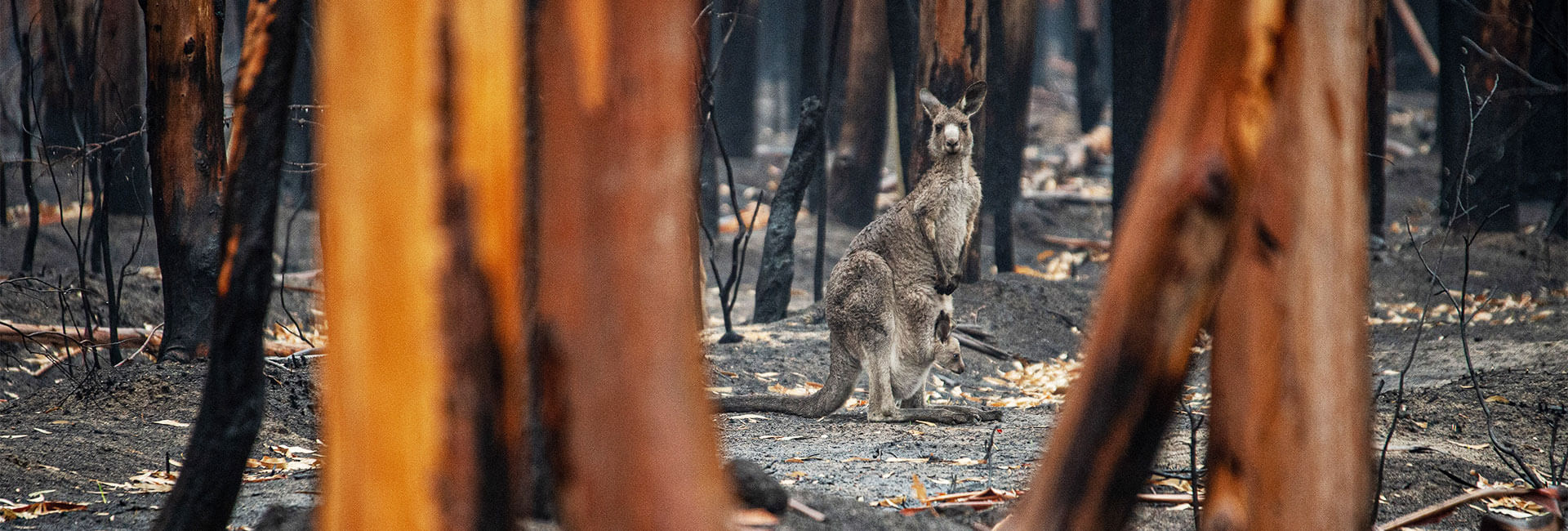Bushfires are a part of life in Australia.
But while they may be common, they’re nothing to be complacent about.
We all know that bushfires pose one of the greatest threats to your home and safety. As such, it’s important to understand your bushfire risks, and what you can do to guard against them.
Your BAL rating
Your Bushfire Attack Level or BAL rating determines the risk of bushfire for your home.
There are 6 BAL ratings ranging from BAL–LOW, where bushfire risk is minimal and standards for building in bushfire-prone areas don’t apply, to BAL–FZ (flame zone), where the risk of direct contact with a bushfire is assessed as being high.
Your home’s BAL rating is calculated using a formula that considers your Fire Danger Index, distance from vegetation, vegetation classification, and the slope of your property. Because of this thorough approach to calculation, two homes in the same neighbourhood may have different BAL ratings. (Speak to your local council to learn how you can determine your BAL rating.)
Ember attack – The greatest risk
Many of the building standards mandated by Australian Standard AS3959–2009 for new homes built in areas with BAL ratings above BAL–LOW are concerned with defending your home against ember attack.
Ember attack occurs when airborne burning debris (embers) set your home alight by setting fire to items in, on and around your home.
Considering that ember attack is responsible for over 85% of homes burning down during a bushfire, it is clearly the most serious bushfire risk for your home – which means it’s important that you understand your risk and what you can do to defend against it.
Where do embers attack?
Gaps around your home
Bushfire research has shown that embers can be sucked into your home through gaps as small as 3mm. Common places these gaps occur include roof ventilation openings, roof vents, between roofing tiles and even around evaporative cooling units.
Fuel around your home
Embers can also set the materials around your home alight. These materials may include mulch, sticks, dry leaves, refuse and even plants in your garden. Another common source of fuel for ember-ignited fires is dry leaves and debris in your gutters.
How can you defend your home?
Gaps around your home
Because embers can enter your home through tiny spaces, bushfire legislation prescribes covering gaps around new homes with ember guards. Ember guards are covers made from approved materials such as 2mm aperture metal mesh. Designed to prevent the entry of burning embers into your home, they must be used on all new homes in bushfire-prone areas. Blue Mountain Co’s 2mm Steel gutter mesh is ember guard compliant for all BAL-rated areas, meaning you can use it as an ember guard around your home.
Fuel around your home
Bushfire legislation doesn’t mandate using gutter guards. However, it does stipulate that if you use a gutter guard, it must be non-combustible. Because gutters full of dried leaves and debris are particularly susceptible to ember attack, at Blue Mountain Co we recommend using ember guard compliant gutter mesh as a gutter guard to help prevent the entry of both leaves and embers into your gutters. Your local fire authority can recommend other measures for dealing with other sources of bushfire fuel around your home.
Take the right precautions
As you can see, ember attack is a serious threat to any home in a bushfire-prone area.
However, by taking the right precautions and using ember guards and other compliant building materials, you can ensure your home has the greatest chance of being able to withstand ember attack – and the devastation that can follow.
Blanchi & Leonard, Investigation of Bushfire Attack Mechanisms Resulting in House Loss in the ACT Bushfire 2003, 2005
Standards Australia, Construction of Buildings in Bushfire-Prone Areas, 2009
Disclaimer: Every effort has been made to ensure these guidelines are consistent with AS3959–2009. However, we cannot guarantee the accuracy of any of the information on this web page. As such, we recommend that you refer to the Australian Standard yourself, or seek tailored advice from a qualified expert.
